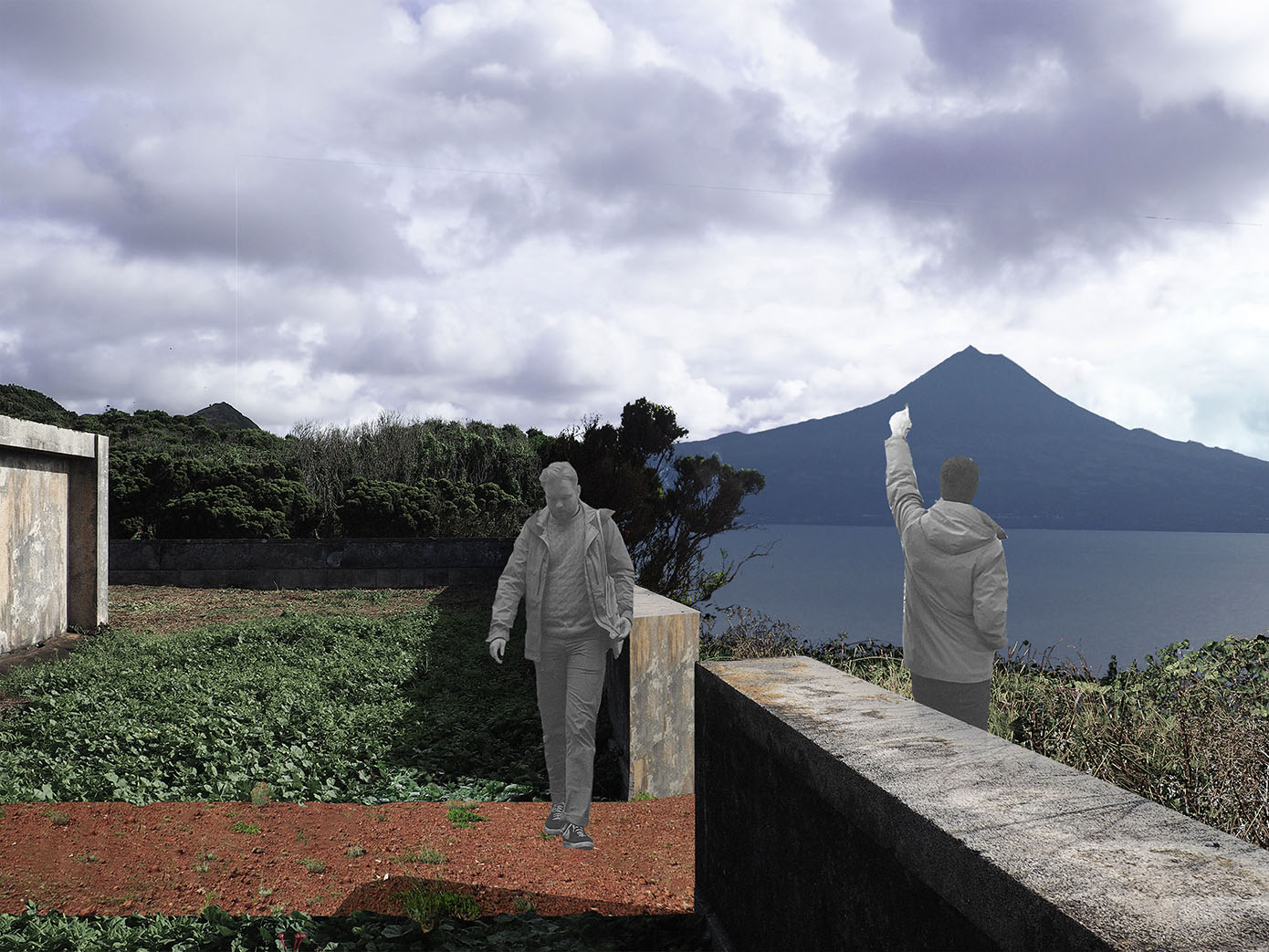Julie Næss Karlsen


Post-disaster abandonment and remembrance
Seismic Memory, Future Archaeology looks at layers of human presence, human withdrawal, and geological processes around the earthquake-damaged and abandoned, yet functional lighthouse at Ponta dos Rosais on São Jorge in the Azores archipelago.
The work is based on fieldwork and appreciation of the lighthouse as a post-disaster landmark and a valuable ecosystem. A procession is framed through the landscape as one approaches the lighthouse, amplifying its significance as a landmark while highlighting its seismic vulnerability. The perimeter wall of the lighthouse becomes the boundary of the main project site, and is left to break up along future fault line movements. To counter the angular monumentality of the lighthouse structures, material lines are imposed in the landscape, creating new sight-lines. The lines mirror but distort the materiality of the place, being made out of site-specific plants, pyroclastic gravel, and broken-down concrete. Consequently, the project is an experiment in full material circularity and hyper-local, low-carbon interventions.
The lines cut through the buildings, challenging their monumentality, encouraging vegetation to enter and accelerating the entropy of the deteriorating structures. Orienting one’s gaze first to the seismic ground and then towards the horizon, the site will serve as a viewpoint to reflect on the specificity of location and as an anti-monumental site for seismic remembrance. It is a project designed to disintegrate and become a site of future archaeology, revealing meaningful layers in the landscape and the careful balance between human presence and abandonment.













